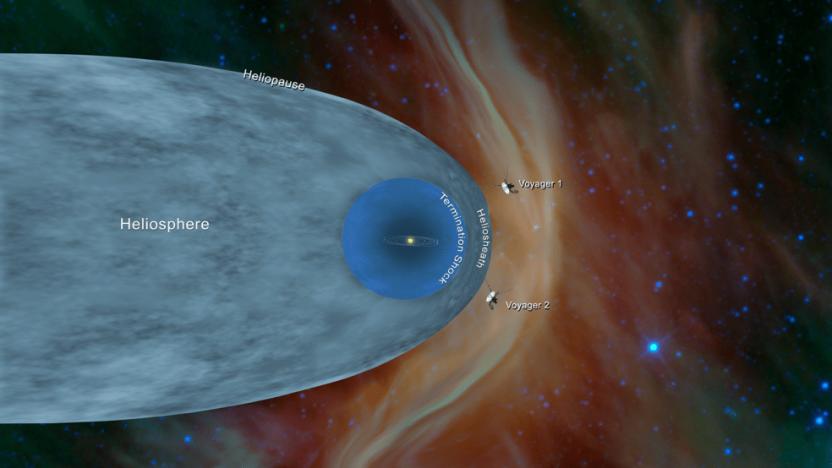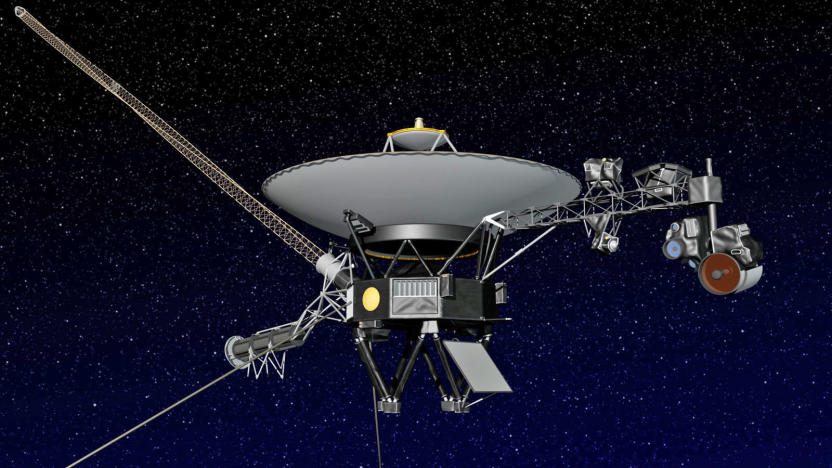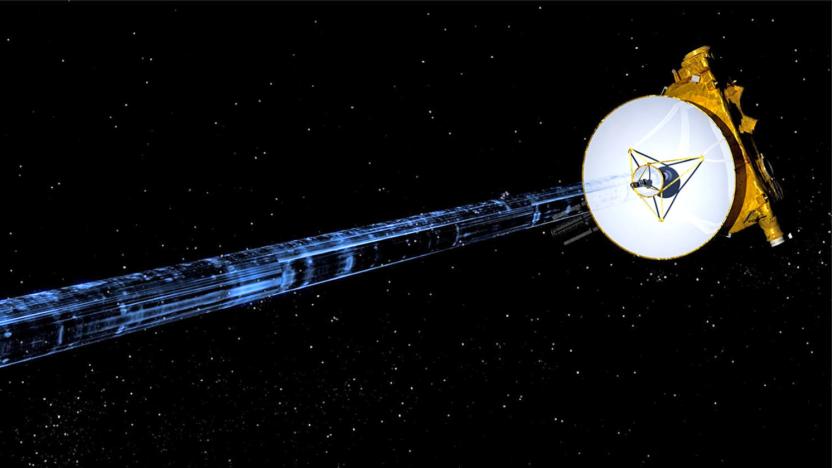heliopause
Latest

NASA’s Voyager 2 probe has entered interstellar space
NASA's Voyager 2 spacecraft has exited the heliosphere -- the plasma bubble created by the sun that encompasses most of our solar system -- and entered interstellar space, making it the second human-made object to do so. Voyager 1 hit this milestone in 2012. NASA said Voyager 2 crossed over the heliopause, the boundary between the heliosphere and interstellar space, on November 5th and the probe is now more than 11 billion miles from Earth.

Voyager 2 probe may be on the edge of interstellar space
NASA's Voyager 2 probe may be close to joining its sibling and entering interstellar space. The vessel has been detecting a five percent increase in cosmic rays since late August, suggesting that it's close to crossing the heliopause (the edge of the solar wind bubble, aka the heliosphere) and entering the interstellar realm. Voyager 1 saw similar increases in May 2012, so its fellow spacecraft may be in for a repeat.

New Horizons probe may have detected Solar System's hydrogen 'wall'
Scientists have learned a bit about the edge of the Solar System from Voyager 1, but there hasn't been a lot of corroborating data without follow-up spacecraft. They appear to be getting a second chance, though. NASA's New Horizons spacecraft has detected what appears to be a "wall" at the edge of the Solar System where interstellar hydrogen gathers as it collides with the solar wind -- in other words, the very edge of the Sun's influence. Researchers found it by capturing a 360-degree snapshot of ultraviolet emissions around the probe, revealing an unusual brightness (potentially bunched-up hydrogen) similar to a signal the Voyager mission detected 30 years ago.

NASA's Voyager 1 marks 35th anniversary of its launch, gets photo retrospective in tribute
It's hard to believe at times that the Voyager 1 probe is older than many of us reading this article, but it's true. The official first part of NASA's Voyager program launched just over 35 years ago on September 5th, 1977, carrying not just cameras and sensors to capture the trip but the famous Golden Record documenting humanity for any curious aliens. To mark the occasion, Wired has gathered together one heck of a photo album that covers both Voyager 1's trip as well as that of Voyager 2, which technically launched earlier (August 20th the same year) but took a more roundabout route through the solar system. The gallery reminds us of the amazing scenery beyond Mars and puts our tiny blue ball of a planet in perspective; Earth was just a speck at best when photographed late into Voyager 2's journey. Perhaps the best news surrounding the milestone is simply that both Voyager probes are still running. At 11 billion miles from the Sun, Voyager 1 may be on the cusp of interstellar space and easily represents the most distant human object ever made, not to mention a record-setter for signal transmissions. There's even a chance we'll still be hearing back from the probe for its 50th anniversary -- its power could keep it chatting up to roughly 2025.

Voyager 1 will exit solar system soon, is so close to the void it can taste it
Endurance: it's important in every race, including the space race, even though many pundits would argue that it kind of fizzled a long time ago. Thirty-three years prior to now, NASA's Voyager 1 began its journey to check in on the outer planets. It accomplished that goal in 1989, and has since moved on to bigger and better things -- you know, like leaving the solar system. Ten billion miles away, Voyager 1's Low-Energy Charged Particle Instrument is spitting out "solid zeroes," which means it's not detecting any more outward movement from solar winds. The heliopause (read: the official edge of the solar system) is just a few short years away for the radioactive-powered spacecraft, which is frightening to think about regardless of your experience in Space Camp. What will happen once it enters interstellar space? We're not sure, but we're trying to set up radio comms with its earth-bound synthesizer progeny for some kind of freaky space jam. We'll keep you posted. [Image courtesy NASA/JPL-Caltech]


